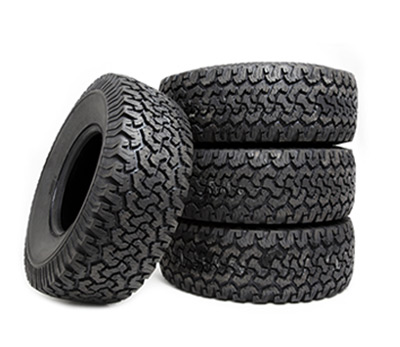- Afrikaans
- Albanian
- Arabic
- Armenian
- Basque
- Belarusian
- Bengali
- Bulgarian
- Croatian
- Czech
- Danish
- Dutch
- English
- Esperanto
- Finnish
- French
- German
- Greek
- Hebrew
- Hindi
- Indonesian
- irish
- Italian
- Japanese
- Javanese
- kazakh
- Rwandese
- Korean
- Kyrgyz
- Latin
- Latvian
- Luxembourgish
- Malay
- Myanmar
- Nepali
- Persian
- Polish
- Portuguese
- Romanian
- Russian
- Serbian
- Slovak
- Spanish
- Swedish
- Tagalog
- Tajik
- Turkish
- Ukrainian
- Uzbek
- Vietnamese
nov. . 09, 2024 20:49 Back to list
Enhancing Workplace Safety with High-Visibility Vests for All Environments
The Importance of Safety Visibility Vests in Work Environments
In today's fast-paced world, safety has become an indispensable concern in various industries, especially those that require personnel to work in environments where visibility is crucial. One of the most effective tools to ensure safety is the safety visibility vest. These vests are designed to enhance the visibility of workers, making them more noticeable to others, particularly in low-light conditions or in the vicinity of heavy machinery. This article will explore the significance of safety visibility vests, the different types available, and the regulations that govern their use.
The Significance of Safety Visibility Vests
Safety visibility vests are not just a fashion statement; they serve a vital purpose in safeguarding the lives of workers. Whether in construction, roadwork, or event management, these vests provide a first line of defense against accidents. They are typically made from brightly colored fabrics, such as neon yellow or orange, and often feature reflective strips that enhance visibility in poor lighting conditions.
The primary role of these vests is to ensure that workers are easily seen by their colleagues and operating vehicles. When working in areas with moving equipment, this visibility can significantly reduce the risk of accidents and fatalities. According to the Occupational Safety and Health Administration (OSHA), high-visibility clothing, including vests, can decrease the likelihood of workplace injuries, especially in industries with high exposure to hazards.
Types of Safety Visibility Vests
Safety visibility vests come in various styles and materials to cater to different occupational needs. Some common types include
1. Class 1 Vests These vests are suitable for workers in low-risk environments where traffic speed is minimal. They provide basic visibility and are typically used in parking lots or warehouses.
2. Class 2 Vests Designed for workers in more hazardous environments, such as roadside construction, Class 2 vests offer enhanced visibility. They are made from bright materials and include reflective stripes, making them ideal for areas with higher traffic and speeds.
safety visibility vests

3. Class 3 Vests These are the most visible vests, suitable for high-risk environments where maximum visibility is critical, such as emergency responders and construction workers on highways. Class 3 vests may feature additional reflective material to ensure that workers remain visible from all directions.
4. Flame-Resistant Vests In industries that involve exposure to flames or high temperatures, such as oil and gas, flame-resistant visibility vests are essential. These vests protect against heat while maintaining high visibility.
5. Customizable Vests Many organizations choose to invest in customizable vests that can incorporate logos or text for branding purposes. These vests not only ensure safety but also promote company identity and professionalism.
Regulations and Compliance
In many regions, including the United States, safety visibility vests are subject to regulatory compliance to ensure worker safety. OSHA mandates that employers must provide appropriate high-visibility apparel based on the work environment and the tasks being performed. Similarly, the American National Standards Institute (ANSI) has established guidelines that classify safety vests based on their visibility standards.
Employers have a legal obligation to assess the risks associated with their specific work environment and supply vests that meet the necessary visibility class. Failure to comply can result in serious consequences, including fines and increased liability in case of accidents.
Conclusion
Safety visibility vests are a crucial component of workplace safety across various industries. Their bright colors and reflective features play an essential role in preventing accidents and protecting workers. By understanding the different types of vests available and adhering to regulatory compliance, employers can significantly enhance the safety of their work environments. Investing in high-quality safety visibility vests not only helps in adhering to safety regulations but also demonstrates a commitment to employee well-being. In an industry where visibility can make the difference between life and death, the importance of these vests cannot be overstated. Embracing safety measures like visibility vests is not just a legal requirement; it's a moral obligation.
-
Work Reflective Vest: A Silent Guardian of Security
NewsJul.10,2025
-
Vest Reflective Safety: A Safety Lighthouse in Low Light and High Traffic Environments
NewsJul.10,2025
-
Soft Cotton Polo Shirts: A Fashionable and Practical Choice for Multiple Scenarios
NewsJul.10,2025
-
Soft Cotton Polo Shirts: A Fashionable and Practical Choice for Multiple Fields
NewsJul.10,2025
-
Reflective Vest: The Light of Industry and Outdoor Safety Protection
NewsJul.10,2025
-
Polo Shirt: A versatile and fashionable item that can be worn in one outfit
NewsJul.10,2025




